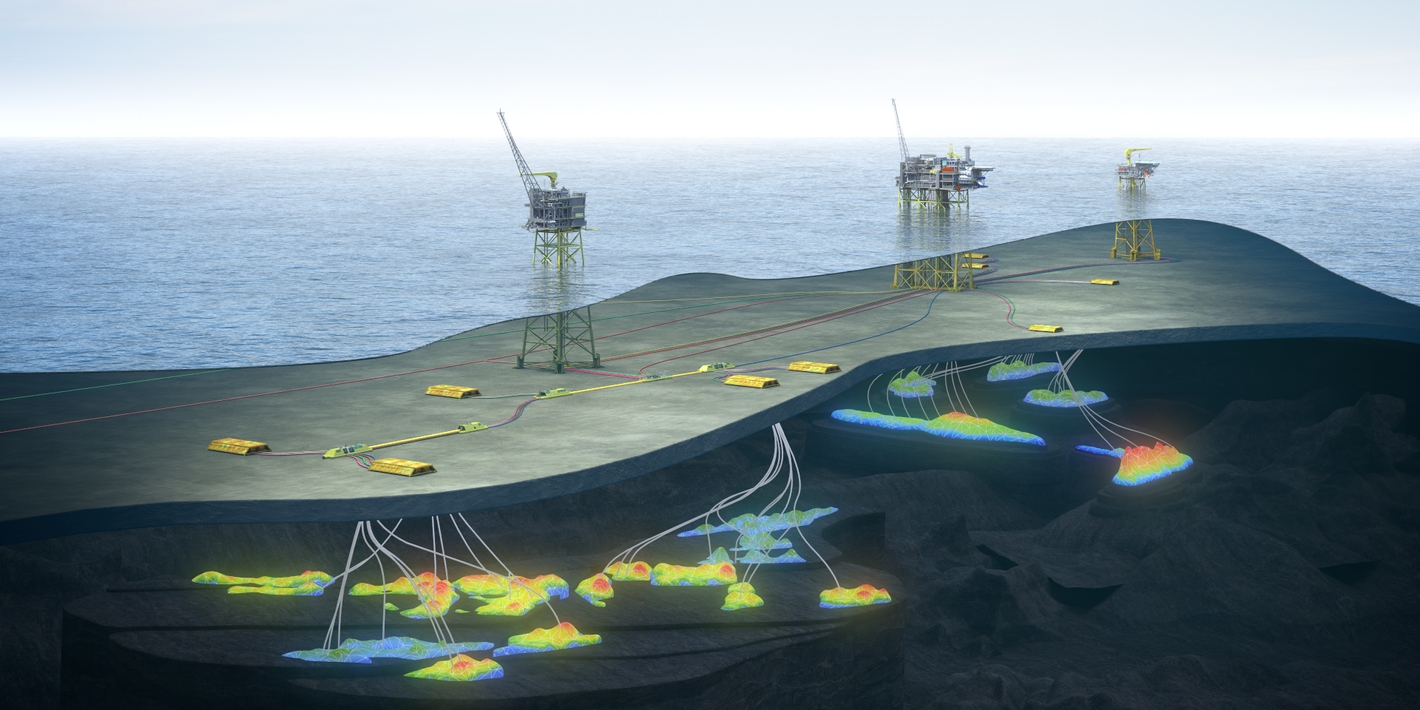Krafla to be developed using ground-breaking concept

Along with Aker BP, Equinor has made an investment decision and will today submit a plan for development and operation for Krafla to the Minister of Petroleum and Energy.
Aker BP will be developing Krafla along with the Fulla and North of Alvheim discoveries in the same area.
Krafla was proven in 2011 and recoverable resources are estimated at 325 million barrels of oil equivalent. Total investments for Krafla are approx. NOK 46 billion (2022-NOK).
"Krafla is yet another example of how we are redefining what can be achieved on the Norwegian continental shelf. Krafla will be developed utilising extensive technological innovation and high levels of digitalisation, automation and remote operation, thus setting a new standard for future offshore developments. With an entirely new operating model, the technologically innovative design will improve safety, cut operating costs and result in close to zero CO2 emissions from production," says Trond Bokn, Equinor's senior vice president for project development.

The unmanned Krafla platform is the first of its kind. It will be remotely operated from shore and will be built without a helicopter deck, living quarters and lifeboats. Access and stays at the platform will be accomplished using service operation vessels. Systems and functions have been reduced to the bare necessities in order to realise the unmanned concept. The solutions are simple, robust and can be run without manual operations.
Future-oriented solutions have been chosen to facilitate a large extent of data-driven decisions based on continuous monitoring of processes and equipment. For example, maintenance planning will be optimised using digital twins. The plan is to carry out maintenance in annual campaigns.
With power from shore, Krafla will be a world leader in low CO2 emissions from production, calculated at 0.4 kg per barrel of oil equivalent.
Aker BP taking over as operator
Together, Krafla, Fulla and North of Alvheim (NOA) make up the area called NOAKA.
In June, Equinor and Aker BP entered into an agreement to transfer operatorship for the development phase and further operation of Krafla to Aker BP in connection with the PDO submission. At the same time, the partnerships are proposing a name change for NOA and Krafla to Hugin and Munin, respectively, and that the entire NOAKA area be called Yggdrasil.
"A coordinated development of the entire area will provide the best preconditions for efficient project implementation and for safe and efficient field operations. We're looking forward to continuing the good cooperation with Aker BP in the development and operations phase," Bokn says.
Total investments for NOAKA are calculated at NOK 115 billion (2022-NOK). Overall resource estimate in the area, forming the basis for the investment decision, is 103 million standard cubic metres of oil equivalent, which corresponds to around 650 million barrels of oil equivalent.
There is considerable potential for more exploration activity in the area, which could further increase both the scope of resources and profitability. Discoveries near existing infrastructure can quickly be brought to market with low costs and low emissions from production.

Latest news

Major contract awards to Norwegian supplier industry
Equinor awards framework agreements to seven supplier companies with a total value of around NOK 100 billion. These agreements lay the foundation for safe and competitive operations at Equinor’s offshore installations and onshore plants in the years to come.

Use of artificial intelligence saved Equinor USD 130 million in 2025
Artificial intelligence (AI) contributed to value creation and savings for Equinor and its partners amounting to USD 130 million in 2025. AI is now utilized on offshore platforms and land facilities to solve industrial tasks on a large scale in a safe, efficient, and profitable manner.

Empire to file preliminary injunction against lease suspension order
Empire Offshore Wind LLC (Empire) filed a civil suit in the U.S. District Court for the District of Columbia today 2 January 2026 challenging the U.S. Department of the Interior’s order directing a suspension to the Empire Wind project. As part of that case, Empire plans to seek a preliminary injunction and allow construction to continue while the litigation proceeds.